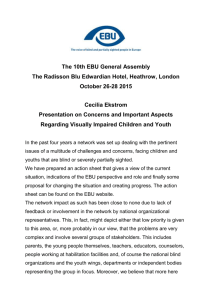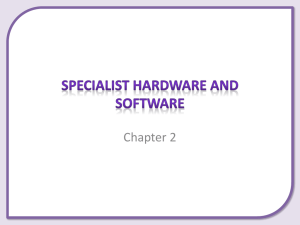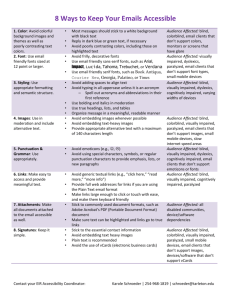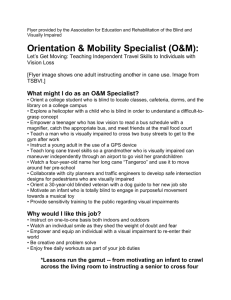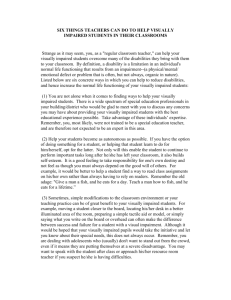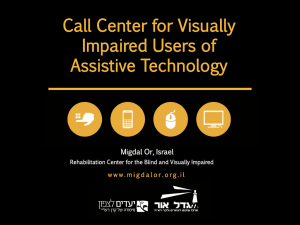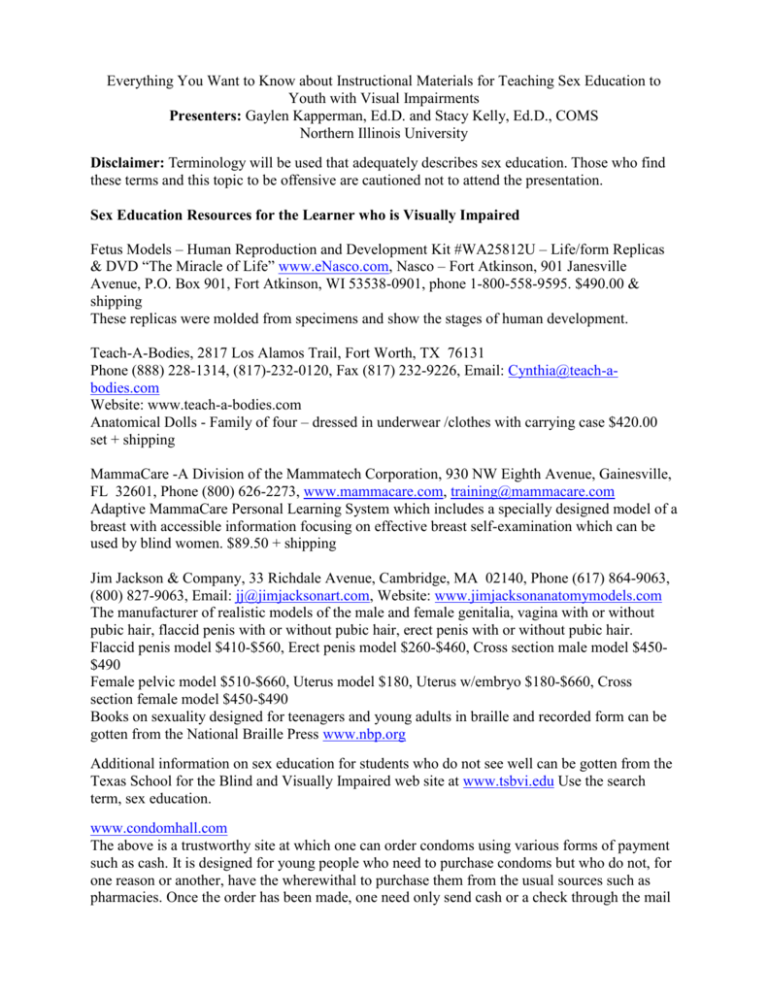
Everything You Want to Know about Instructional Materials for Teaching Sex Education to
Youth with Visual Impairments
Presenters: Gaylen Kapperman, Ed.D. and Stacy Kelly, Ed.D., COMS
Northern Illinois University
Disclaimer: Terminology will be used that adequately describes sex education. Those who find
these terms and this topic to be offensive are cautioned not to attend the presentation.
Sex Education Resources for the Learner who is Visually Impaired
Fetus Models – Human Reproduction and Development Kit #WA25812U – Life/form Replicas
& DVD “The Miracle of Life” www.eNasco.com, Nasco – Fort Atkinson, 901 Janesville
Avenue, P.O. Box 901, Fort Atkinson, WI 53538-0901, phone 1-800-558-9595. $490.00 &
shipping
These replicas were molded from specimens and show the stages of human development.
Teach-A-Bodies, 2817 Los Alamos Trail, Fort Worth, TX 76131
Phone (888) 228-1314, (817)-232-0120, Fax (817) 232-9226, Email: Cynthia@teach-abodies.com
Website: www.teach-a-bodies.com
Anatomical Dolls - Family of four – dressed in underwear /clothes with carrying case $420.00
set + shipping
MammaCare -A Division of the Mammatech Corporation, 930 NW Eighth Avenue, Gainesville,
FL 32601, Phone (800) 626-2273, www.mammacare.com, training@mammacare.com
Adaptive MammaCare Personal Learning System which includes a specially designed model of a
breast with accessible information focusing on effective breast self-examination which can be
used by blind women. $89.50 + shipping
Jim Jackson & Company, 33 Richdale Avenue, Cambridge, MA 02140, Phone (617) 864-9063,
(800) 827-9063, Email: jj@jimjacksonart.com, Website: www.jimjacksonanatomymodels.com
The manufacturer of realistic models of the male and female genitalia, vagina with or without
pubic hair, flaccid penis with or without pubic hair, erect penis with or without pubic hair.
Flaccid penis model $410-$560, Erect penis model $260-$460, Cross section male model $450$490
Female pelvic model $510-$660, Uterus model $180, Uterus w/embryo $180-$660, Cross
section female model $450-$490
Books on sexuality designed for teenagers and young adults in braille and recorded form can be
gotten from the National Braille Press www.nbp.org
Additional information on sex education for students who do not see well can be gotten from the
Texas School for the Blind and Visually Impaired web site at www.tsbvi.edu Use the search
term, sex education.
www.condomhall.com
The above is a trustworthy site at which one can order condoms using various forms of payment
such as cash. It is designed for young people who need to purchase condoms but who do not, for
one reason or another, have the wherewithal to purchase them from the usual sources such as
pharmacies. Once the order has been made, one need only send cash or a check through the mail
with instructions on where to send the condoms. The condoms arrive in an unmarked envelop.
Thus preserving anonymity. There is no age limit imposed on the customer. ?Blind youngsters
who do not have the means of transportation necessary to travel to a pharmacy or who may
require the assistance of a sighted person can use this site as a convenient location at which to
purchase condoms.
An FAQ addresses many questions about the proper use of condoms and STIs. The site is
completely accessible to a person who is using a screen reader.
Total Access Group, Inc., 1671 E. Saint Andrew Place, Santa Ana, CA 92705
www.totalaccessgroup.com, phone 800-320-3716
A source of a wide variety of condoms in addition to models of contraceptive devices such as an
I.U.D., cervical cap, female condom, etc.
Described Sex Education Videos, www.dcmp.org
(described and captioned media program)
This is a free service to all individuals who are visually impaired and hearing impaired. This is
also free to those who work with these individuals. One can “stream” captioned and described
videos of all sorts including a considerably large number of videos focusing on sex education,
STIs and all aspects of sexuality. The collection of videos also includes pieces that are of
general entertainment interest.
The following are from www.HealthEdco.com – Health Edco, P.O. Box 21207, Waco, TX
76702-1207, phone 855-510-6720
Female Contraceptive Model - Item 26110 – $144.45 & shipping
This model can be used for demonstrating proper contraceptive insertion.
Female - Individual Cervical Dilatation Models (9) – Item 78959 $74.45
Students can understand the changes the cervix undergoes during the stages of labor.
Childbirth Model Set: Pelvis, Fetal doll, Perineum, and Placenta – Item 78968 - $190.05
Demonstrate childbirth with a perineal cloth model attached to the pelvis and the placenta
attachable to the fetal doll.
Male – Testicle Model, Brown (two lumps in each testicle) – Item: 26400E - $116.95
Representation of how to check for testicular lumps.
The following are from www.Amazon.com
Famemaster 4D-Vision Human Female Reproductive Anatomy Model $25.00
8” model with 19-25 detachable parts and display stand to show how the female reproductive
organs work.
Famemaster 4D-Vision Human Male Reproductive Anatomy Model $25.00
8” model with 19-25 detachable parts and display stand to show how the male reproductive
organs work.
Obitsu Dolls – 2 Male Multiple jointed dolls – possible $59.00/each, 2 Female Multiple jointed
dolls $59.00/each (Hair sold separately) $20 per wig, Polymer clay to make male/female body
parts to attach to dolls with Velcro circles.
Used to demonstrate different positions.
Related Publications
Farrenkopf, C., McGregor, D., Kapperman, G., & Kelly, S. M. (2014). Physical education and
health. In C. Holbrook, C. Hannan, & T. McCarthy Foundations of education Volume II (3rd
Edition). Chapter under review. New York, NY: AFB Press.
The topic of sex education is included as a subcomponent of this book chapter on
physical education and health. We have provided a series of instructional guidelines,
strategies, and materials for sex education instruction with students who are visually
impaired. Many of the resources provided in this book chapter are also included in this
presentation. For example, anatomically correct models of male and female genitalia,
safer sex training materials, examples of all of the regularly prescribed birth control
methods and devices, described videos focusing on reproduction, and more are all
discussed in this book chapter as well as today’s presentation.
Kelly, S. M. (2014). Forty years in the making: Special issue on sex education. Division on
Visual Impairments Quarterly, 59(2), 1-70.
This Division on Visual Impairments Quarterly (DVIQ) special issue is entirely devoted
to the topic of sex education and students who are visually impaired, including those with
additional disabilities. The topic of sex education and students who are visually impaired
is broad and complex. Readers will find wide ranging information about the topic as well
as thought provoking discussions about the underlying challenges involved.
The last special issue on this topic of sex education and students with visual impairments
was published exactly 40 years ago in 1974. The 1974 special issue of The New Outlook
for the Blind was among the first pioneering efforts to explore this topic within the
profession of teaching students with visual impairments.
This issue of DVI-Q includes a grand total of nine articles. The articles have been written
by experts from across the U.S. and address many of the most pressing issues. The
articles explain practical strategies, several resources, and different perspectives to be
considered in providing students who are visually impaired visual impairments with a
healthy foundation from which to develop their well-being.
Kelly, S. M. (2014). Historical perspectives on sex education for students with visual
impairments: Looking back forty years on the last special issue on the topic. Division on Visual
Impairments Quarterly, 59(2), 8-11.
For at least 40 years, the field has been discussing the need for breakthroughs in the sex
education that is provided to students who are visually impaired. It is evident, however,
that students who are blind or have low vision have yet to be provided with sex education
that incorporates meaningful methods and materials. The issues surrounding this topic
have not been accounted for or fully addressed by today’s cultures, families, or school
systems. As Torbett explained back in 1974, “sex education for the blind is a most
worthwhile venture and one that is far overdue” (p. 215).
Kapperman, G., & Kelly, S. M. (2014). Accessible sex education resources for students who
are visually impaired: Assistive technology is required. Division on Visual Impairments
Quarterly, 59(2), 59-64.
There is an ever-growing amount of accessible reading material available to students who
are blind or visually impaired. Teachers and parents should help their students avail
themselves of the vast amount and variety of reading material which is now available on
all aspects of sexuality. Use of the proper assistive technology devices and software can
afford students who are visually impaired access to the very wide range of information on
human sexuality.
Recommended sources for digital text: audible.com, Bookshare, National Braille Press,
and National Library Service for the Blind and Physically Handicapped (NLS).
Instructional strategies: Use realistic tangible models of the reproductive systems to
supplement the reading material. The descriptions included in the reading material are not
adequate for providing accurate information for persons who cannot see pictures. Use
real objects such as condoms and feminine hygiene products to supplement the reading
material.
Assistive technology is required: In order for the students to take advantage of the very
large amount of information available in electronic formats, they must be well-trained in
the use of the appropriate equipment and software.
Kapperman, G., Page, K., & Kelly, S. M. (2014). Finding the one: Human mate selection
applied to persons who are visually impaired. Division on Visual Impairments Quarterly, 59(2),
38-44.
The selection of a mate may very well be the most important personal decision of a
lifetime. Happiness, wellbeing, and productivity can be significantly and profoundly
affected by this personal choice. Individuals who are blind or have low vision face
significant barriers and major obstacles in the process of human mate selection. The ECC
can serve as a framework for instruction that facilitates healthy growth and development
in a wide variety of life skills including the human mate selection process.
Humans, like all primates, are inherently visual creatures. The ultimate goal of any mate
selection is to create healthy, viable, offspring. Females have one set of criteria and males
have another.
Female Selection: Human mate selection is largely female choice. There are 5 basic
criteria every female subconsciously looks for in a mate: larger than she, alpha, provider,
smarter, and attractive.
Male Selection: Males look for attributes that subconsciously signal the female’s ability
to bear his child: waist to hip ratio, youth, and health.
There are numerous ways ECC-specific instruction can enhance desirable traits such as:
leadership, employability and physical attractiveness
Kapperman, G., Brown-Ogilvie, T., Yesaitis, J., & Peskin, A. Prevention of sexual assault against
children who are visually impaired. Division on Visual Impairments Quarterly, 59(2), 33-37.
Little has been published regarding victimization of children with blindness or visual
impairments. The authors reviewed the literature that pertains to children with disabilities
in general, with the assumption that this information may be equally relevant for children
with visual disabilities. There is a higher incidence of sexual abuse of children with
disabilities compared to nondisabled children. Over 90% of sexual predators are known
to the child and most sexual predators are men.
The more severe the child’s disability, the more he or she appears to be vulnerable to
potential predators. Many children who suffer sexual abuse exhibit certain behaviors
which may point to that fact. Adult caregivers and educational professionals should be
aware of this situation. Adult caregivers and educational professionals should be alert to
the possibility of sexual abuse being perpetrated against children with visual
impairments.
Kapperman, G., & Kelly, S. M. (2013). Sex education instruction for students who are visually
impaired: Recommendations to guide practitioners. Journal of Visual Impairment & Blindness,
107(3), 226-230.
In this report, we have assembled a series of recommendations for accommodations and
additional teaching and preteaching to guide teachers of students with visual impairments
in sex education instruction for students with visual impairments. The recommendations
were derived from our experiences and the few research studies in this important topic
area. Krupa and Esmail (2010) found that three specific categories should be addressed in
developing a framework for sex education instruction involving students with visual
impairments: content, environment, and delivery. We have applied the same three
specific categories in this report.
Kelly, S. M., & Kapperman, G. (2012). Sexual activity of young adults who are visually
impaired and the need for effective sex education. Journal of Visual Impairment & Blindness,
106(9), 519-526.
This article analyzes data on the sexual experiences of young adults who are visually
impaired and young adults without disabilities. We conducted a secondary analysis of the
National Longitudinal Transition Study 2 (NLTS2) federal database and assessed a
nationally representative sample of transition-aged young adults with visual impairments.
During the same period as the NLTS2, identical survey questions were asked of young
adults without disabilities who participated in survey research by the Centers for Disease
Control and Prevention (CDC). The CDC survey sample included young adults who were
two to three years younger than the participants in the NLTS2 sample.
The transition-aged young adults with visual impairments reported having similar rates of
sexual experiences as their sighted counterparts except two to three years later. We
concluded that there is a need to provide effective instruction in sexual health that
incorporates meaningful methods and materials that are designed specifically to meet the
unique needs of young adults who are visually impaired.


